Term 1 Unit 1 | History | 6th Social Science - What is History? | 6th Social Science : History : Term 1 Unit 1 : What is History?
Chapter: 6th Social Science : History : Term 1 Unit 1 : What is History?
What is History?
HISTORY
Unit 11
What is History?

Learning Objectives
* To
know what history is all about.
* To
understand the importance of history.
* To
learn about the lifestyle of the pre-historic man.
* To
know how paintings portray the daily activities of the pre-historic man.
* To
understand the importance of history and historical researches.
Tamilini enters her
house from school. Her mother, who was reading a book, greets Tamilini with a hug.
She collects her school bag and asks Tamilini to refresh herself. She gives Tamilini
some snacks to eat. She then asks Tamilini about the school activities of that day.
Mother: Tamilini, what subject did you study today?
Tamilini: History, ma.
Mother: Oh nice! Did you properly understand what
history is?
Tamilini: Yeah! I understood something about history.
Can you please tell me more about history?
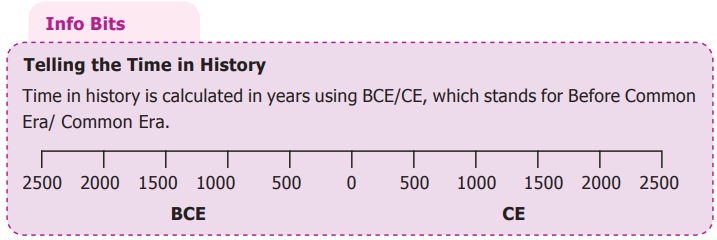
History is the study of past
events in chronological order.
Mother: What is your name?
Tamilini: Tamilini.
Mother: Tell me your mother’s name.
Tamilini: Mrs. Sumathi.
Mother: Father’s name?
Tamilini: Mr. Adhiyaman.
Mother: Tell me the name of your father’s father?
Tamilini: You mean grandpa? Mr.
Chidambaram.
Mother: Do you know the name of great grandpa. Mr. Chidambaram’s father?
Tamilini: Grandma always used to tell me about one
‘great grandpa’.
You want that great
grandpa’s name, amma? mmm…
Info Bits
The term
history has been derived from the Greek word “Istoria” which means
‘learning by enquiry’.
Mother: Yes, Your great grandpa’s name is Mr. Ramasamy.
OK.
Often your father shows proudly
a very old wooden pen and used to tell us that it was his grandpa’s pen. Do you
remember it?
Tamilini: Yes, amma! Normally he keeps it in a beautiful
wooden case on his table. Is that the one?
Mother: You are right, Tamilini. We cannot write
with that pen now. But, father has kept it as a treasure. If you ask your father
about that, he will show you the diary written by your great grandpa with that old
pen. From that diary, we come to know that your great grandpa was a literate, while
most of his villagers were illiterates. Further, we can understand the lifestyle
of that period and also about activities from his diary writings.
Tamilini: Can this small diary record so much of news,
amma?
Mother: Yes, Tamilini. We understand the period and
lifestyles of people of Old Stone Age from used stone tools, like what you understand
about your grandpa and his time from his diary writing.

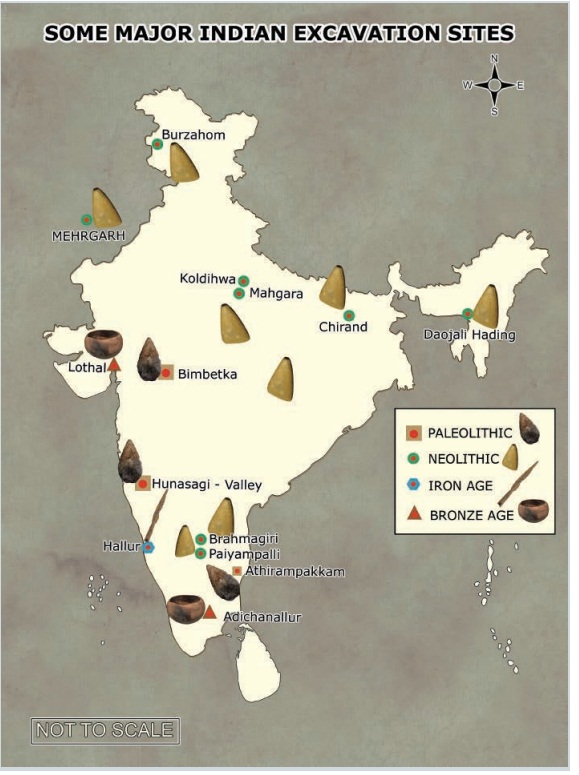
Tamilini: What are the other sources that help us understand
the lifestyles of Stone Age people?
Mother: We came to know their hunting style through
their paintings on the rocks and the walls of the caves.
Tamilini: Rock paintings? It sounds really surprising.
Why did they draw these paintings?
Info Bits
Numismatics – The study of Coins Epigraphy- The study
of inscription
Mother: Some would have stayed back, without joining
the hunting team. So for their benefit, these pictures could have been drawn. They
might have done it as a part of their passtime.
Tamilini: Certainly amma. That’s how we identify their
lifestyles. Isn’t it, amma?
Mother: Well said, Tamilini. The period between the
use of first stone tools and the invention of writing systems is pre-history. Stone
tools, excavated materials and rock paintings are the major sources of pre-history.
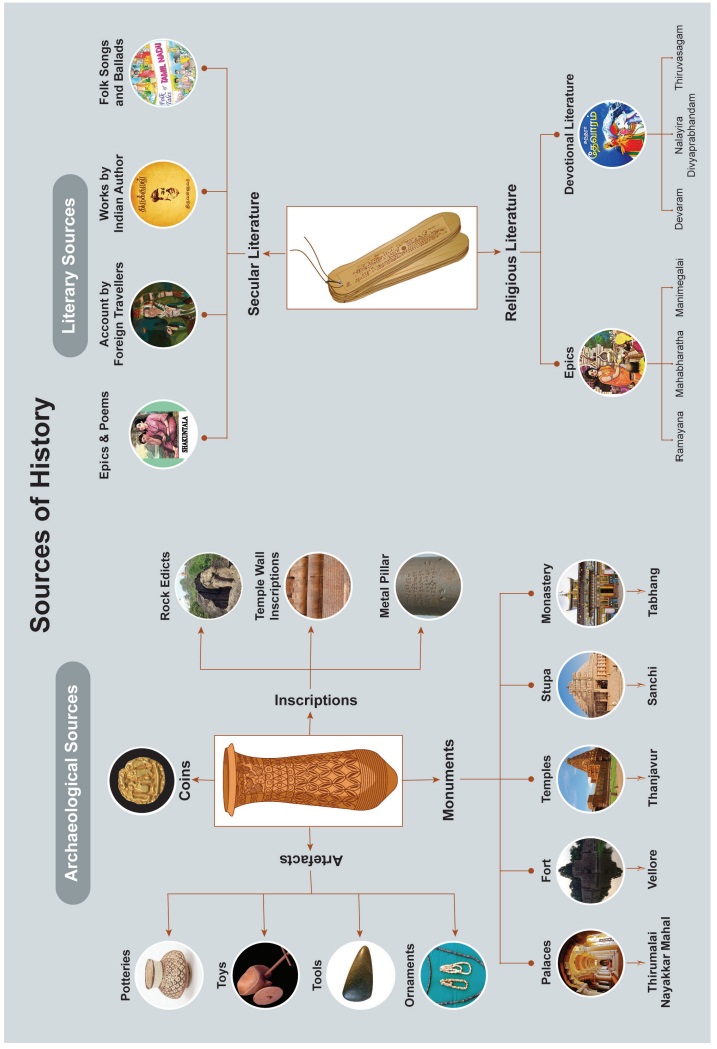
A Mighty Emperor Ashoka
CASE
STUDY
The most famous ruler
of ancient India was Emperor Ashoka. It was during his period that Buddhism spread
to different parts of Asia. Ashoka gave up war after seeing many people grieving
death after the Kalinga war. He embraced Buddhism and then devoted his life to spread the
message of peace and dharma. His service for the cause of public good was exemplary.
He was the first ruler to give up war after victory. He was the first to build hospitals
for animals. He was the first to lay roads. Dharma Chakra with 24 spokes in our
national flag was taken from the Saranath Pillar of Ashoka.
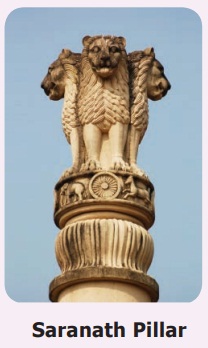
Even though Emperor
Ashoka was great, his greatness had been unknown until 20th century.The material evidence provided
by William Jones, James Prinsep and Alexander Cunningham revealed the greatness
of Emperor Ashoka. Based on these accounts, Charles Allen wrote a book titled
The Search for the India’s Lost Emperor,
which provided
a comprehensive account of Ashoka. Many researches made thereafter brought
Ashoka’s glorious rule to light. These inscriptions were observed
on the rocks, Sanchi Stupa and Saranath Pillar and helped to understand the greatness
of Ashoka to the world.
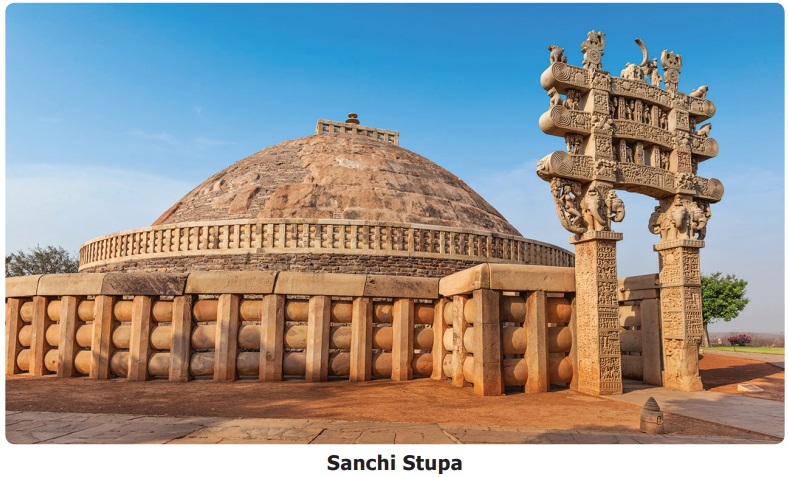
Now one can understand the importance
of historical research. But for the efforts of scholars, the greatness of Emperor
Ashoka would not have come to light.

Mother: Do you know what proto history is?
Tamilini: That is the period between pre history and
history.
Mother: Exactly. The period for which records in
writing are available but not yet deciphered is called proto history. Today, we
are leading a safe life with all modern equipment. But our ancestors did not live
in such a safe environment. There might have been chances of wild animals entering
their caves. But, they realised that dogs could help them prevent the entry of such
dangerous animals by its sniffing skill. Hence they started domesticating dogs for
their protection and hunting activities.
From this, we also know how inscriptions,
monuments, copper plates, accounts of foreigners or foreign travellers and folk
tales play a vital role in constructing and reconstructing history.
Tamilini: Now, I completely understand what history
is, amma.
Thank you, amma.
Dhamma 'istheprakrit word for the
Sanskrit term 'dharma', which means religious duty.
Summary
* The life styles of pre historic
people can be understood from the stone tools, rock paintings, fossils and other
excavated materials.
* Proto history is the
period between pre-history and history.
* Early humans domesticated dogs for their protection
and hunting activities.
* Mighty Emperor Ashoka
followed the path of peace and dharma.
* Dharma Chakra with
24 spokes in our national flag was taken from Saranath Pillar of Ashoka.
GLOSSARY
1. Sources - a place, person, text or object from whichsome data can
be obtained
2. Ancestor - a person related to you who lived a long time ago
3. Dharma- righteousness
4. Monument - a statue, building or other structure built by a notable
person
5. Inscription - written records engraved on stones, pillars, clay
or copper tablets, caves and walls of temples.
6. Historian - A person who studies or writes history
ICT CORNER
What Is History?
History in your hand, create a timeline.
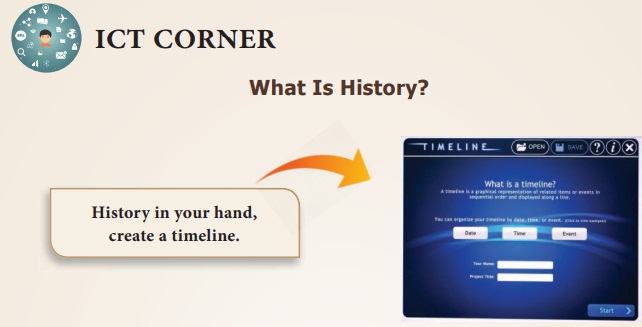
Steps:
* Open the
Browser and copy and paste the link given below (or) type the URL given (or) Scan
the QR Code.
* Timeline
page will open. Type your name and the project name in the corresponding boxes.
* Click on
the empty timeline. A menu box will appear with Label, Description and Choose image
boxes. Enter the details, choose the image and click the tick mark.
* After entering
all the details in chronological order click “Finish” and “Save Final” to save your
project

Timeline Project’s URL::
http://www.readwritethink.org/files/resources/interactives/
timeline_2/
Related Topics